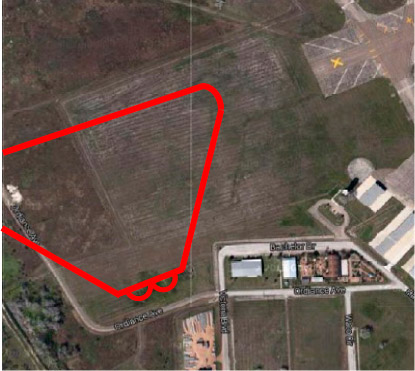11.7 Former Foster Air Force Base, Victoria, TX
Contact: Anita Meyer
Organization: Army Corps of Engineers
Email: [email protected]
11.7.1 Site Description and Conceptual Site Model
The Former Foster Air Force Base (AFB) Victoria, TX was used for single jet engine training during the Korean Conflict. Prior to becoming an AFB, the site was Foster Army Airfield and was used during World War II for basic flight training. The AFB was inactivated in 1959 and is now the Victoria Regional Airport. Releases of chemicals to the environment from past activities of the Department of Defense are being investigated and remediated under the Formerly Used Defense Site (FUDS) program by the US Army Corps of Engineers (USACE) with regulatory oversight by the Texas Commission of Environmental Quality (TCEQ). This case study presents an example of a relative bioavailability assessment (RBA) for PAHs. The Tier 2 protective concentration levels (PCLs) for the site, under the Texas Risk Reduction Program, and the RBA results have been approved by the TCEQ with additional review provided by the USEPA. The RBA was incorporated into the Remedial Investigation phase of the project.
The project is a former skeet shooting range used by the Army for training from 1941 to 1945. The site is shown on Figure 11-9 and is an outline of the range fan. The two half circles were where the target shooters were positioned for shooting at skeet targets, also known as clay pigeons.

Figure 11‑9. Figure 1 Former Foster Air Force Base skeet shooting range location.
Source: (USACE 2016)
11.7.1.1 PAHs on Site
11.7.1.2 Site Soil Type
11.7.1.3 Land Use
11.7.2 Methodology Used for Evaluating Bioavailability.
11.7.3 Use of the Bioavailability Study at the Site
11.7.4 How Might Bioavailability Results Affect Site Decisions?


